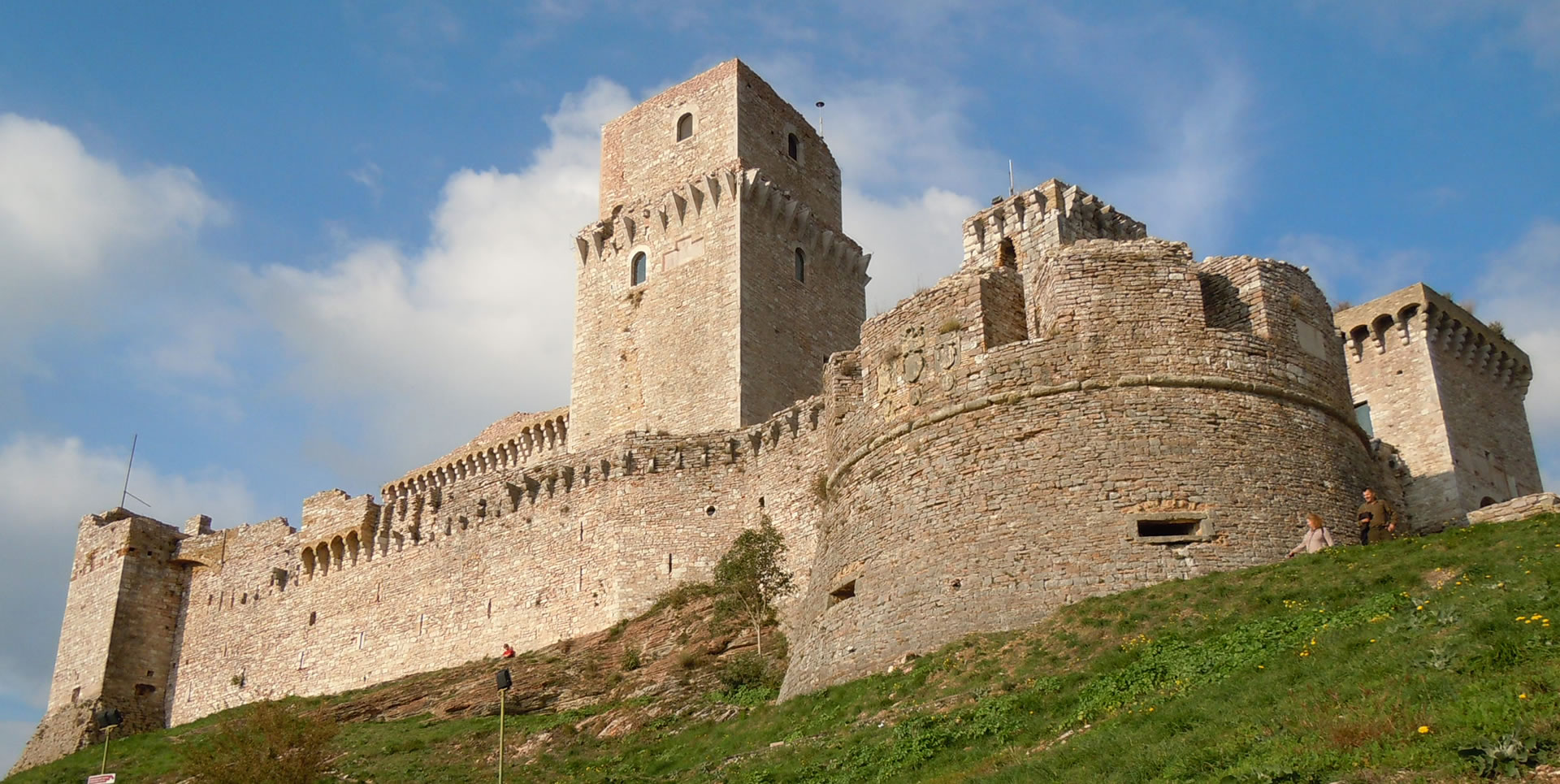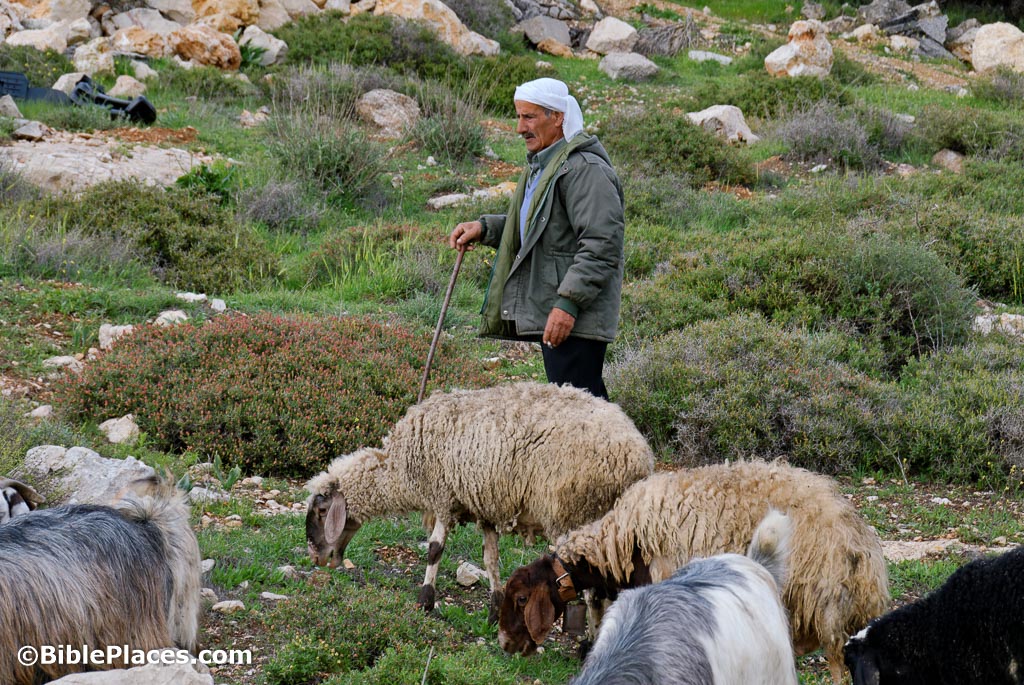A sermon preached at Niles Discovery Church, Fremont, California,
on Sunday, April 30, 2023, by the Rev. Jeffrey Spencer.
Scripture: John 10:1-10 and Acts 2:42-47
Copyright © 2023 by Jeffrey S. Spencer
I was doing some research on why people move into gated communities this week and the first picture in the second article I looked at was this one of Buckingham Palace.
“Yep,” I thought. “Monarchs live in gated communities.”
That thought I immediately brought to mind images of the castle in Assisi, Italy. Assisi was built on a hill, and at the top of the hill is the ruin of Rocca Maggiore, the castle home of various potentates for several hundred years.
Assisi is an old city. When I visited there a decade and a half ago, my primary impression of the city was, “It’s a typical walled, medieval, European city.” It seemed to me that the old buildings had probably been modernized on the insides, with the outsides left to look at medieval as possible. New buildings seemed to be built to look like they came from that same medieval time. And the medieval time frame was picked because that’s the time period of Saint Francis. It’s also the time period when Rocca Maggiore was built.
As I said, medieval Assisi was a walled city. The wall was built to help defend the city from invasion. I expected, when I explored the Rocca Maggiore ruins, to find evidence of defensive fortifications for the castle itself. Sure enough, I found slits in the walls from which arrows could be shot.
What surprised me was that many, in fact, the majority of these slits were facing the city, not the land outside the city wall. The castle was built to defend itself from the citizens of the city. In a very real sense, the whole of medieval Assisi was a gated community – built to protect itself from foreigners. It seems that Rocca Maggiore was a gated community within a gated community – built to protect itself from foreigners and the riffraff of their own community.
It turns out that “security” is the primary reason people move into gated communities today, too – at least in the USA. The Long Cove Club in Hilton Head Island, South Carolina, makes that claim and uses it as a reason to move there.[1] They don’t claim it is more secure there; they claim people move to gated communities seeking a greater sense of security. They limit their claim because statistics, it turns out, don’t support a claim that gated communities are actually safter. While there are a few fewer burglaries per thousand homes in gated communities compared to homes outside gated communities, I was unable to find other statistics about other crimes or about accidents that support the perception that gated communities are safer. In fact, one website says, “… there’s no concrete data that proves gated communities are considerably low-crime compared to non-gated communities …”[2]
I wondered, too, if racism raises its ugly head when the data about gated communities are crunched. And that’s not exactly true. I expected racism to raise its ugly head when the data about gated communities are crunched. It turns out that’s only sort of accurate. For instance, one study looked at metropolitan areas in the southwest of the USA. It found that gated communities don’t so much cause housing segregation as “entrench social segregation in suburban communities which are already racially similar.”[3]
The thing that sent me down this rabbit hole about gated communities was the strange metaphor Jesus uses to describe himself in today’s reading from the gospel of John. “Very truly, I tell you, I am the gate for the sheep.” The broader metaphor Jesus is using is of a sheepfold – which is not a word I hear very often in my daily Fremont life. A sheepfold is a pen of some sort to put sheep into.
This is a picture of a sheepfold from the United Kingdom. It is probably a dry-stone wall enclosure, which is probably one of the oldest permanent forms of a sheepfold. Incidentally, building a circular wall is the way to enclose the largest area with the shortest length of wall, which is one reason why sheepfolds built out in the middle of grazing areas are often circular. When Jesus says, “I am the gate,” he’s saying that he stands in the gap of that enclosure, that he is the way the sheep come in and go out.
Of course, a sheepfold doesn’t need to be made with stones. If your herd is on the move, you might build a fold for them out of sticks and downed tree limbs and even bushes. During the day, the sheep might be out in the hopefully-green fields grazing or stopping to drink at a pool of quiet water. At night, the shepherds would gather their sheep into the fold for protection – it’s easier to protect a smaller area from predators. I’ve been told (though I don’t know if it’s true) that a shepherd might actually sleep in the gap of the sheepfold wall to keep the sheep from wandering out at night, literally becoming a gate.
I found myself wondering, when I started thinking about this sermon last month, What does it mean to be part of a gated community where Jesus is the gate?
If you have an excellent memory, you’ll remember the story from John 9 I preached on during Lent. Notice that I said you’d remember the story from John, not that you’d remember my sermon. In that story, Jesus gives sight to a man who was born blind. It’s a scandalous thing for Jesus to do because some people thought this man’s blindness had to be deserved, caused by his sins or those of his parents. It’s a scandalous story because Jesus does this on the sabbath. The scandalized religious leaders can’t believe that this can be from God or that Jesus is of God because, well, the scandal of it all!
One of the things I love about the story is the evolution of the explanation offered by the newly sighted man. He starts by explaining what happened in great detail, and the scandalized people don’t believe him. His last statement is quite simple: “I do not know whether this man has a bad heart. But this I do know: I was blind and now I see” (John 9:25).
Jesus gets drawn into the argument and the section of John we heard today, the beginning of chapter 10, is Jesus’ explanation of how his acts are indeed from God. I’m not a thief or a bandit, he says. I don’t come in over the wall; I come in through the gate. I come in to take care of the sheep. The sheep know who I am and they follow me.
Except he never says, “I.” He just paints a picture of the sheep in a sheepfold and their shepherd who knows them and who they know. But the scandalized people don’t get what he’s saying, so he tries again.
I am the gate, he says. And if Jesus is the gate, then Jesus is the way to safety in the evening and the way to nourishment in the morning. Jesus seems to be saying, “The people get this. Why don’t you?”
Jesus hasn’t yet quite said the thing he’s going to say about himself. He will in the next verse, in John 10:11, try another metaphor to explain who he is. In the verse that comes right after this reading, Jesus says, “I am the good shepherd.”
He’s been saying that the real shepherd, the good shepherd, enters by the gate and that the sheep recognize and trust that shepherd’s voice. He’s been saying that the real shepherd, the good shepherd actually and properly cares for the sheep. In fact, I get the impression that the shepherd Jesus talks about is one who works not for the sake of harvesting wool or mutton, but rather for the sake of the sheep themselves flourishing, thriving, living. “I came,” Jesus says, crystalizing his mission, “that they may have life, and have it abundantly.”
Now, preachers of the so-called “prosperity gospel” will tell you that abundant life mean a life in which you have material wealth. I don’t think that’s what Jesus meant, and I don’t think that’s what the early church understood it to mean.
Yes, Acts was written 100ish years after Pentecost and today’s passage is a look at the early church through heavily tinted rose-colored glasses. Still, that early image of the earlier church is very much an understanding of what this abundant life is all about. Luke says this earliest expression of this first Christ-centered community sold their possessions to care for those in need. And they devoted themselves to worship and prayer, breaking bread together (that is, celebrating communion). And they practiced a lifestyle of hospitality and learning.
Last week, I asked you to remember a time your heart spoke to you of a holy truth. I said that the story you remembered is a story worth sharing. It is an example of your individual witness to the power of God. Your witness doesn’t stop with your individual stories.
The passage from John reminds us that we’re part of the Jesus’ flock, that Jesus is our shepherd, that he is our way to abundant life. And the passage from Acts reminds us that the flock is a community. The path to abundant life is very much a community project.
The community we call “church,” the flock of which we are a part, is a different sort of gated community from the ones real estate developers sell us. The church doesn’t keep us locked away, separate from the rest of the world, nor does it keep the rest of the world locked away from us. As members of the Jesus’ flock, we are called to come in and to go out. As members of the Jesus’ flock, we are called to live with deep generosity.
And it’s more than that, I think. Something else was going on in that earliest expression of the different sort of gated community we read about in Acts. I can only guess about what was happening that Luke doesn’t write about. Here’s what I think it is.
I think the people of the early church let themselves be seen, deeply seen, vulnerably seen. And they let themselves love with their whole hearts, even though there’s no guarantee. And they practiced gratitude and joy, even in those moments of terror, when they were wondering, “Can I love this much? Can I believe in this this passionately? Can I be this fierce about this?” And most importantly, I think they believed that they were enough.[4]
That’s where they found abundant life.
That’s where we can find it, too.
Amen.
[1] Long Cove Club website, https://longcoveclub.com/news/benefits-of-living-in-a-gated-community, accessed 28 April 2023.
[2] Kris Peter, “Are Gated Communities Safer? The Facts and Risks,” Sunlight Living, https://sunlightliving.com/are-gated-communities-safer-the-facts-and-risks/ (accessed 29 April 2023).
[3] Renaud Le Goix and Elena Vasselinov, “Gated communities entrench social segregation in suburban communities which are already racially similar,” The London School of Economics and Political Science, http://bit.ly/1T4v6m8 (posted 20 January 2016; accessed 29 April 2023).
[4] This is based on a Brené Brown quote you can find at https://www.goodreads.com/quotes/6684779-to-let-ourselves-be-seen-deeply-seen-vulnerably-seen-to.





Leave a comment
Comments feed for this article